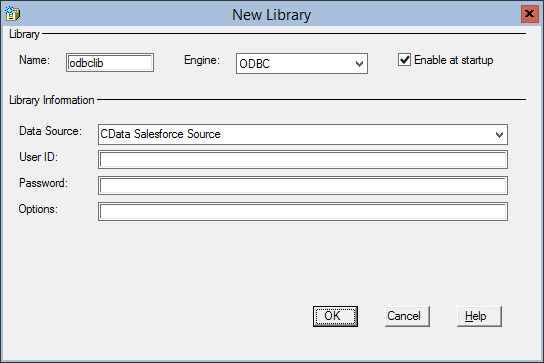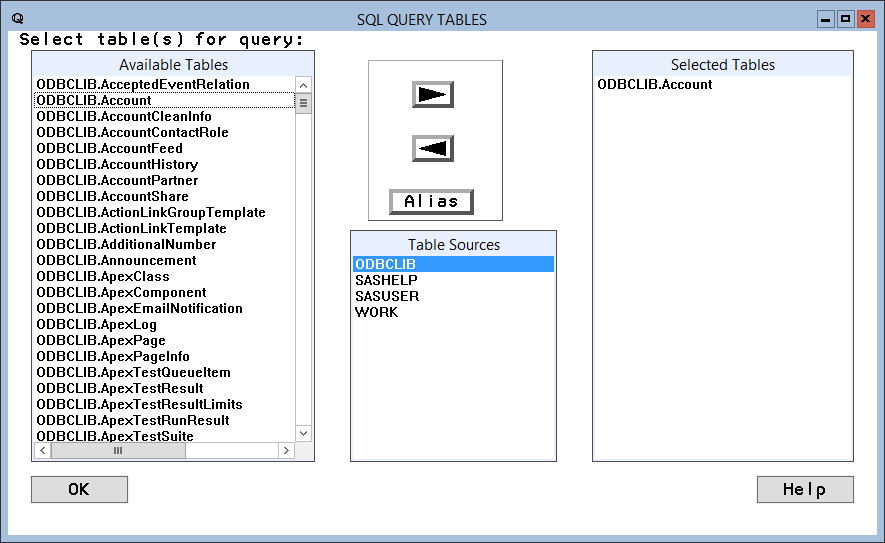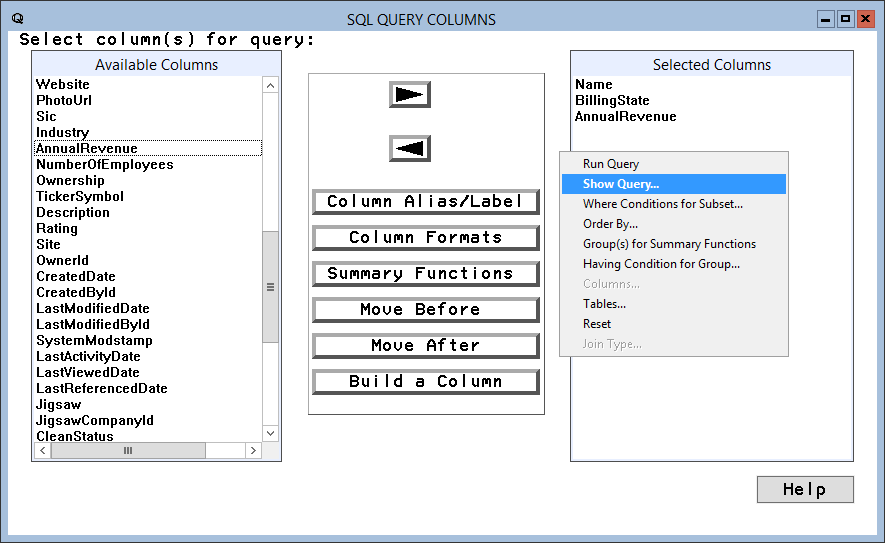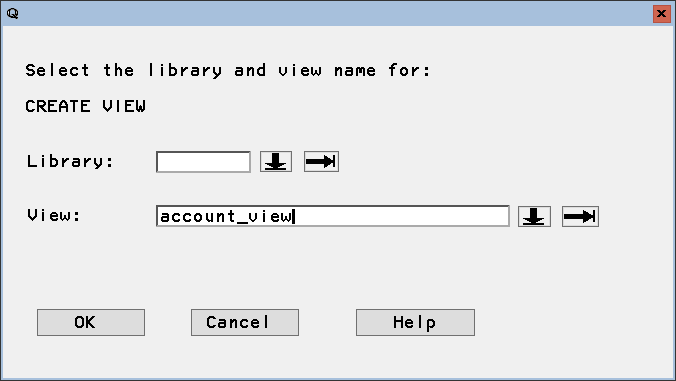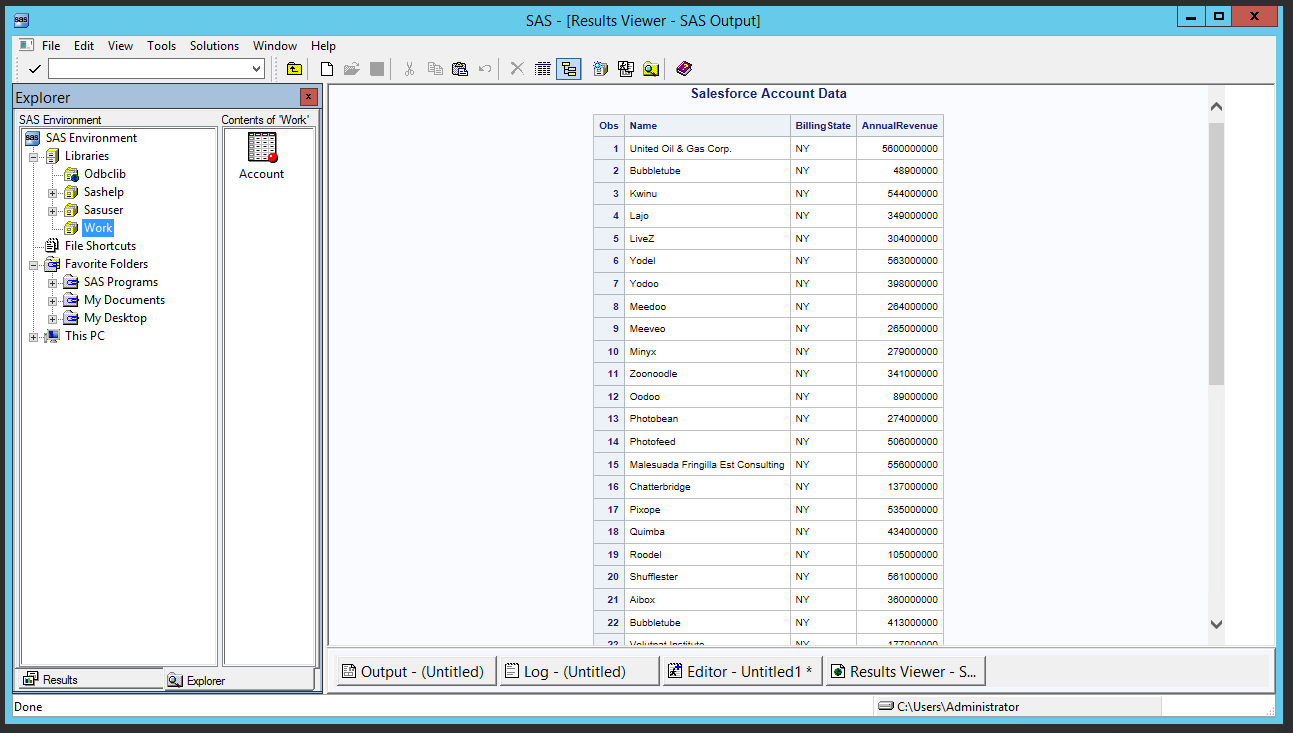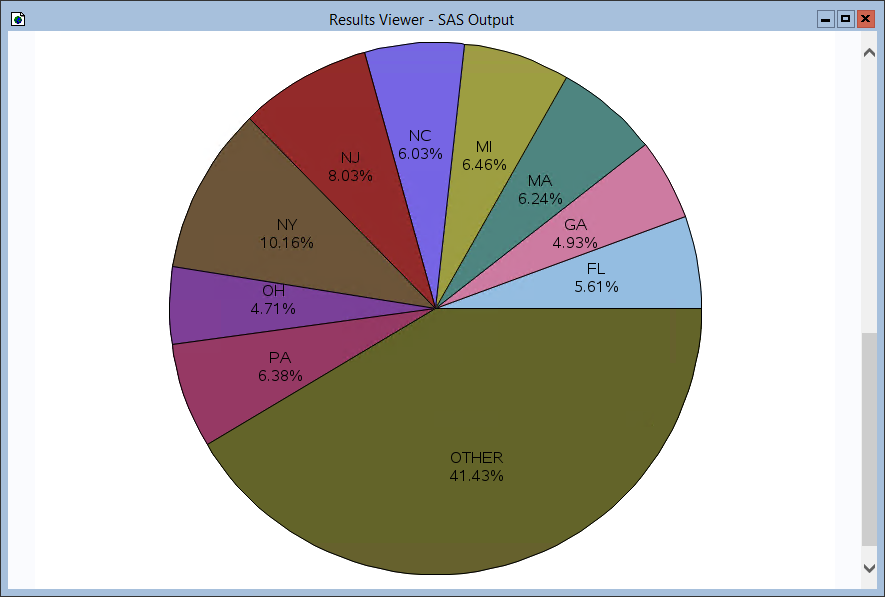Use the CData ODBC Driver for WooCommerce in SAS for Real-Time Reporting and Analytics
SAS is a software suite developed for advanced analytics, multivariate analysis, business intelligence, data management, and predictive analytics. When you pair SAS with the CData ODBC Driver for WooCommerce, you gain database-like access to live WooCommerce data from SAS, expanding your reporting and analytics capabilities. This articles walks through creating a library for WooCommerce in SAS and creating a simple report based on real-time WooCommerce data.
The CData ODBC Driver offers unmatched performance for interacting with live WooCommerce data in SAS due to optimized data processing built into the driver. When you issue complex SQL queries from SAS to WooCommerce, the driver pushes supported SQL operations, like filters and aggregations, directly to WooCommerce and utilizes the embedded SQL engine to process unsupported operations (often SQL functions and JOIN operations) client-side. With built-in dynamic metadata querying, you can easily visualize and analyze WooCommerce data in SAS.
Connect to WooCommerce as an ODBC Data Source
Information for connecting to WooCommerce follows, along with different instructions for configuring a DSN in Windows and Linux environments (the ODBC Driver for WooCommerce must be installed on the machine hosting the SAS System).
WooCommerce supports the following authentication methods: one-legged OAuth1.0 Authentication and standard OAuth2.0 Authentication.
Connecting using one-legged OAuth 1.0 Authentication
Specify the following properties (NOTE: the below credentials are generated from WooCommerce settings page and should not be confused with the credentials generated by using WordPress OAuth2.0 plugin):
- ConsumerKey
- ConsumerSecret
Connecting using WordPress OAuth 2.0 Authentication
After having configured the [ plugin, you may connect to WooCommerce by providing the following connection properties:
]
- OAuthClientId
- OAuthClientSecret
- CallbackURL
- InitiateOAuth - Set this to either GETANDREFRESH or REFRESH
In either case, you will need to set the Url property to the URL of the WooCommerce instance.
When you configure the DSN, you may also want to set the Max Rows connection property. This will limit the number of rows returned, which is especially helpful for improving performance when designing reports and visualizations.
Windows
If you have not already, first specify connection properties in an ODBC DSN (data source name). This is the last step of the driver installation. You can use the Microsoft ODBC Data Source Administrator to create and configure ODBC DSNs.
Linux
If you are installing the CData ODBC Driver for WooCommerce in a Linux environment, the driver installation predefines a system DSN. You can modify the DSN by editing the system data sources file (/etc/odbc.ini) and defining the required connection properties.
/etc/odbc.ini
[CData WooCommerce Sys]
Driver = CData ODBC Driver for WooCommerce
Description = My Description
Url = https://example.com/
ConsumerKey = ck_ec52c76185c088ecaa3145287c8acba55a6f59ad
ConsumerSecret = cs_9fde14bf57126156701a7563fc87575713c355e5
For specific information on using these configuration files, please refer to the help documentation (installed and found online).
Create a WooCommerce Library in SAS
Connect to WooCommerce in SAS by adding a library based on the CData ODBC Driver for WooCommerce.
- Open SAS and expand Libraries in the Explorer pane.
- In the Active Libraries window, right-click and select New.
- Name your library (odbclib), select ODBC as the Engine, and click to Enable at startup (if you want the library to persist between sessions).
- Set Data Source to the DSN you previously configured and click OK.
![Creating a library for WooCommerce in SAS.]()
Create a View from a WooCommerce Query
SAS natively supports querying data either using a low-code, point-and-click Query tool or programmatically with PROC SQL and a custom SQL query. When you create a View in SAS, the defining query is executed each time the view is queried. This means that you always query live WooCommerce data for reports, charts, and analytics.
Using the Query Tool
- In SAS, click Tools -> Query
- Select the table sources and the table(s) you wish to pull data from. Then, click OK.
![Selecting table(s) to visualize.]()
- Select columns and right-click to add filtering, ordering, grouping, etc.
![Selecting columns(s) to visualize and configuring the query.]()
- Create a local view to contain the query results by right-clicking the SQL Query Tool window, selecting Show Query, and clicking Create View. Name the View and click OK.
![Create a local view to work with WooCommerce data.]()
Using PROC SQL
- In SAS, navigate to the Editor window.
- Use PROC SQL to query the data and create a local view.
NOTE: This procedure creates a view in the Work library. You can optionally specify a library in the create view statement.
proc sql;
create view orders_view as
select
parentid,
total
from
odbclib.orders
where
ParentId = '3';
quit;
- Click Run -> Submit to execute the query and create a local view.
Report On or Visualize WooCommerce Data in SAS
With a local view created, you can report, visualize, or otherwise analyze WooCommerce data using the powerful SAS features. Print a simple report using PROC PRINT and create a basic graph based on the data using PROC GCHART.
Print an HTML Report
- In SAS, navigate to the Editor window.
- Use PROC PRINT to print an HTML report for the WooCommerce Orders data.
proc print data=orders;
title "WooCommerce Orders Data";
run;
![A simple WooCommerce data report.]()
Print a Chart
- In SAS, navigate to the Editor window.
- Use PROC GCHART to create a chart for the Orders data.
proc gchart data=orders;
pie parentid / sumvar=total
value=arrow
percent=arrow
noheading
percent=inside plabel=(height=12pt)
slice=inside value=none
name='OrdersChart';
run;
![A simple WooCommerce data chart.]()






